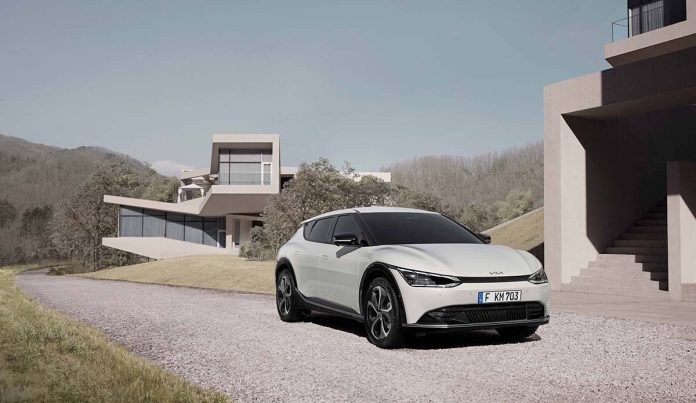Over the last decade, the popularity of all-electric cars has been on the rise. With their sleek designs, eco-friendly features, and low maintenance costs, more and more people are opting to make the switch to electric vehicles. But have you ever wondered how these cars work? What sets them apart from traditional gas-powered cars, and how do they manage to travel such long distances without the need for gasoline? In this blog post, we will dive deep into the inner workings of all-electric cars, exploring the technology that makes them run and the benefits they offer over traditional cars. Whether you’re considering purchasing an electric vehicle or just curious about the technology behind them, this post will provide you with all the information you need to understand how all-electric cars work.
How does an EV Car work and what is Regenerative braking?
Once you’ve charged your electric vehicle at a charging point, the battery will store the electrical energy before sending it to the electric motor. The motor then converts this energy into mechanical energy, which powers the rotation of the wheels.
Unlike internal combustion engines that rely on fuel, exhaust systems, spark plugs, and alternators, electric cars don’t require any of these components to run.
However, both traditional and electric vehicles have a mechanism for recharging the battery while on the move. In a traditional car, the alternator is powered by the wheels’ rotation, recharging the battery.
On the other hand, electric cars use a process called regenerative braking, where the electric motor can move in two directions. It powers the car and rotates the wheels in one direction and charges the battery in the opposite direction.
When you release the accelerator and apply the brakes, the motor switches direction and starts putting energy back into the battery.

The 5 Key Components of an All-Electric Car
Electric vehicle engines are made up of 5 components. The battery, electric motor, reducer, onboard charger, and the EPCU (Electric Power Control Unit).
Battery
The battery in an EV stores the electric energy, the equivalent of a fuel tank in an ICE. The larger the battery pack, the more capacity a car has, allowing it to have a longer mile range. However, there is a limit. The weight of a larger battery pack will affect the car’s performance and reduce the interior space. To make the batteries suitable, manufacturers need to maximize the energy density of the batteries. Ideally, they want them to be small and lightweight with as much electrical storage as possible.
The continuous cycle of charge will start to influence the amount of charge a battery can hold. The cycle of charge is when the battery is charged and the stored energy gets converted to produce electricity. Electric Vehicle batteries are predicted to last 10-20 years. Manufacturers tend to offer a 5–8 year warranty. If they offer warranties based on mileage the warranty would last up to roughly 100,000 miles.
Electric car batteries are fitted with a battery heating system and battery management system. The heating system will come into use when the weather is particularly cold, as cold reduces charging speed and capacity. To resolve this, the heating system will heat up the battery to the most efficient temperature.
The role of management system manages the cells in the battery so they can work collectively. Keeping the cells in good condition optimizes the endurance and performance of the battery.
Electric Motor
The electric motor converts electrical energy into kinetic energy to power the wheels. The advantages of using an electric motor are noise reduction and minimal vibration compared to a petrol or diesel car. The EV powertrain created from the battery to the motor and then to the wheels is smaller, creating much more space and more exploration with interior design.
When the car regenerates energy from braking, the motor will convert this back into electrical energy which then goes back into the battery.
Reducer
The reducer works in a similar way to the transmission on an ICE. You may wonder why the electric engine needs one. It’s because the electric motor has a much higher RPM (Revolutions per minute) than an internal combustion engine. The transmission that the ICE has, works to bring the RPM to match the driving circumstances. The reducer on an electric vehicle does the opposite, it brings the RPM down to a suitable level.
On Board Charger
When charging your electric car at slow charging points or from a home outlet, the current produced is an Alternating Current (AC). For the car to charge it needs to be changed into a Direct Current (DC). The AC is supplied by the electricity grid and the DC is the current that charges the battery in your electric car. However, the On-Board Charger runs depending on the type of charging point you are using. The fast and rapid charging points don’t need to use because they automatically supply Direct currents.
ECPU
ECPU stands for Electric Power Control Unit. It controls the flow of electric power to the vehicle. There are three components to the EPCU, the inverter, low voltage converter, and a vehicle control unit.
Inverter
The inverter converts the current which is then used to control the electric motor speed. It changes it from DC- AC and operates the acceleration and deceleration of the vehicle.
Low Voltage Converter
The low voltage converter is responsible for changing the high voltage to low voltage electricity to be able to supply the several electronic systems that an All-Electric vehicle has. The electronic systems only use low voltage.
Vehicle Control Unit
The Vehicle Control Unit manages the EPCU. It makes sure each component of the EPCU is running correctly. This includes overseeing the motor control, regenerative braking, A/C load management, and the power supply for the electronic systems.
Maintenance of an All Electric Car
The maintenance of all-electric vehicles is much less costly and more time-saving. Maintenance can cost you up to 50% less for electric cars as opposed to normal petrol or diesel cars, as due to the technology that’s used in EVs they have fewer parts, thus reducing the wear and tear on the car.



